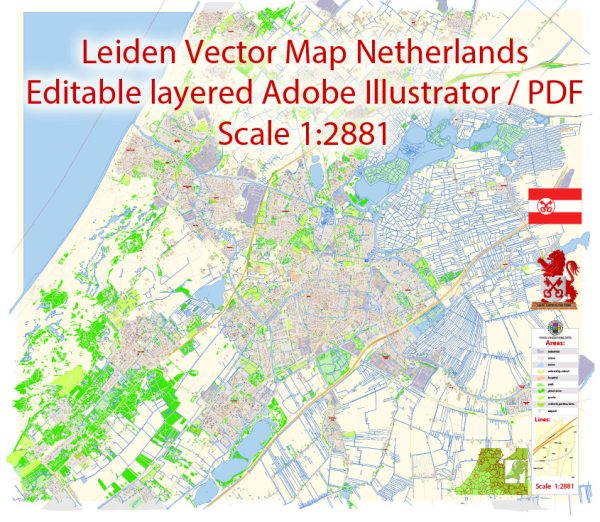Leiden, located in the province of South Holland, Netherlands, has a rich history of urban development dating back to Roman times. Here’s a brief overview of its historical urban development:
- Roman Era (1st Century BCE – 4th Century CE): Leiden’s history can be traced back to the Roman period when it was a small settlement along the Old Rhine River. The Romans built a fort at the site known as “Lugdunum Batavorum.” This early settlement laid the foundation for future development.
- Medieval Period (9th Century – 16th Century): Leiden began to flourish in the Middle Ages as a center for trade and commerce. It gained city rights in 1266 and became a member of the Hanseatic League, a medieval trade alliance. The city expanded its fortifications and became an important center for cloth production and trade.
- Golden Age (17th Century): The 17th century was the Golden Age of the Dutch Republic, and Leiden played a significant role during this period. The city was home to the first university in the Netherlands, Leiden University, founded in 1575. The city’s prosperity was also fueled by industries like printing and publishing, as well as its strategic location along major waterways.
- Canal System: Leiden is known for its picturesque canals, and many of them were constructed during the 17th century. The canals served both practical and aesthetic purposes, facilitating transportation and trade while adding to the city’s charm.
- Scientific and Cultural Center: In addition to its economic success, Leiden became a hub for scientific and cultural development. Renowned scholars like Rembrandt Harmenszoon van Rijn and Jan Steen were associated with the city. Leiden’s cultural heritage is still evident in its museums and historic buildings.
- Industrialization (19th Century): The 19th century saw industrialization impacting Leiden. The city’s economy diversified, incorporating industries such as textiles, chemicals, and engineering. The expansion of the railway network further connected Leiden to the rest of the country.
- 20th Century: Leiden continued to evolve in the 20th century. The city faced challenges during World War II, but it rebounded in the post-war period with urban renewal projects and modernization efforts.
- Contemporary Leiden: Today, Leiden is a vibrant city known for its historical charm, academic institutions, and cultural offerings. The well-preserved historic center, with its canals, windmills, and historic buildings, attracts tourists and residents alike.
The history of Leiden’s urban development reflects its resilience, adaptability, and contributions to Dutch culture and society over the centuries. The city’s blend of history and modernity makes it a unique and appealing destination in the Netherlands.


 Author: Kirill Shrayber, Ph.D.
Author: Kirill Shrayber, Ph.D.